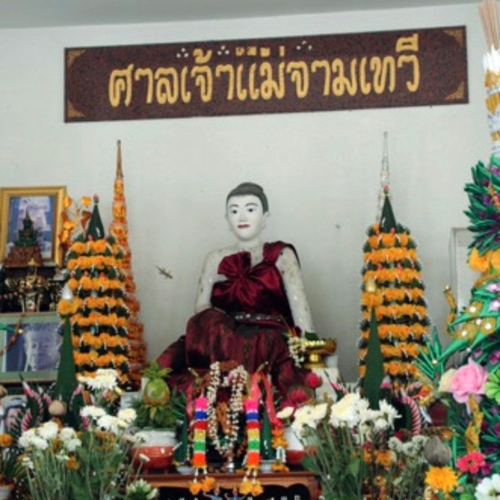Research & Article

The Perception of Local History: Queen Camadevi and Developments in Lamphun Province
By Naren Panyapu, Suwipa Champawan
Published on 26 May 2024
History
Location of original sources
Journal of Fine Art, Chiang Mai University (JOFA) Vol. 8 No. 2 (2017)
Public perceptions of Queen Camadevi have changed in accordance with the currents of globalization, and today, historical narratives of Queen Camadevi represent a local history with dynamic force for mobilizing present-day Lamphun development schemes. As this paper will illustrate, there are two broad narratives relating to Queen Camadevi which have been linked to Lamphun’s city development, as follows.
The first narrative is derived from Tamnān or a Buddhist chronicle, as well as oral traditions gathered from interviewing the elderly aged 60-100 years in Lamphun Province. These findings illustrated a narrative of Queen Camadevi from oral traditions locating her birthplace at Ban Nong Doo, for which there is a local chronicle to support this folktale. Since 2547 B.E., this has given rise to academic interest and research in order to find some data to support the project for supporting the old city of Lamphun to be a a World Heritage site. The study of local history as well as the excavation of archeological sites at Ban Nong Doo and Ban Boh Kao are a valuable contribution to art and cultural heritage in Lamphun.
Another narrative derives from visual and mass media programs created as symbols for transmitting the accounts of Queen Camadevi, such as the murals, the sculptures, the portraits, and auspicious objects that linking together the places related to the history of Queen Camadevi in order to use as sites for performing sacrificial rituals with accompanying cultural stage shows in Lamphun Province. These reenactments were intended to create an identity of Muang Lamphun and to generate funds as well as volunteer participation to support the organizing of the aforesaid festival for the promotion of arts and culture, and annual traditions at the provincial level.